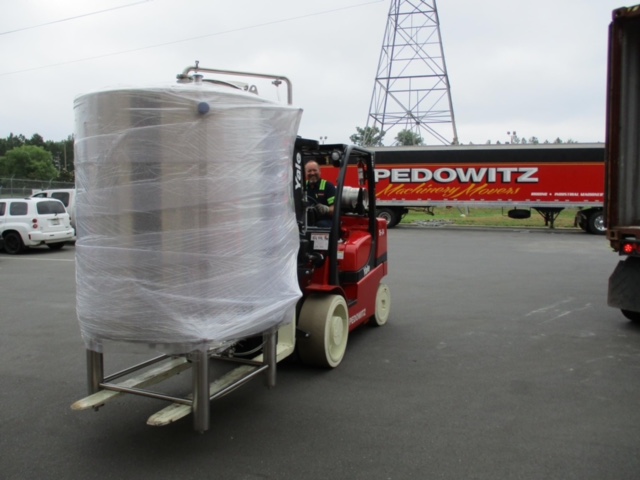13 BREWERY TANKS AND EQUIPMENT IMPORTED FOR A NEW BAR RESTAURANT AND BREWERY



Container Shipping Rigging & Transporting Brewery Tanks in NC isn’t the sort of thing that happens everyday. Unless of course you’re Pedowitz Machinery Movers by Charlotte.
In these photos 13 Brewery Tanks for a brand-new local brewery in Mint Hill, NC. The client had them shipped from overseas and delivered to us in two 40’ shipping containers.
First we unloaded the tanks for this new restaurant food service brewery as well as the accessories with which they came, out of the containers and stored them in our secure warehouse facility until they were ready to have them delivered. How did it end up?
We’ll get to that in a minute but first you should know the difference between ordinary movers and machinery movers who are qualified and certified for import export container shipping. How did it end up? We’ll get to that in a minute. But first you should know there’s a big difference between movers and machinery movers qualified and certified to handle import export shipping of containers in North Carolina.



To become eligible to handle 40 ft. containers for shipping at ports, movers typically need to obtain the necessary certifications and licenses. Here are the steps that movers usually follow to become eligible to handle 40 ft. containers:
Obtain a CDL (Commercial Driver’s License): A CDL is required to operate a commercial vehicle, such as a tractor-trailer, which is typically used to transport 40 ft. containers. To obtain a CDL, movers must pass a written test and a skills test.
Complete a training program: Movers may need to complete a training program that focuses on container handling, including loading and unloading techniques, securing cargo, and container weight distribution.
Obtain certifications: Depending on the specific requirements of the port, movers may need to obtain certifications such as the TWIC (Transportation Worker Identification Credential) and the Hazmat (Hazardous Materials) endorsement.
Obtain insurance: Movers may need to obtain liability and cargo insurance to protect themselves and their clients in case of any accidents or damages.
Maintain compliance: Movers must comply with all regulations and safety standards set by the port and the relevant governing bodies, such as the Federal Motor Carrier Safety Administration (FMCSA).
By following these steps, movers can become eligible to handle 40 ft. containers for shipping at ports. It’s important to note that the specific requirements may vary depending on the port and the region, so movers should check with the relevant authorities to ensure they meet all the necessary criteria.
How did the story end. Like every Pedowitz story ends – in a SUCCESS.
Then we loaded them onto our trucks and hauled unloaded and rigged them in and set them as directed (they weighed from 1,000 to 2,500 each).
Don’t take our word for it though. Check out our RECENT JOBS BLOG as well as our YOUTUBE CHANNEL.



